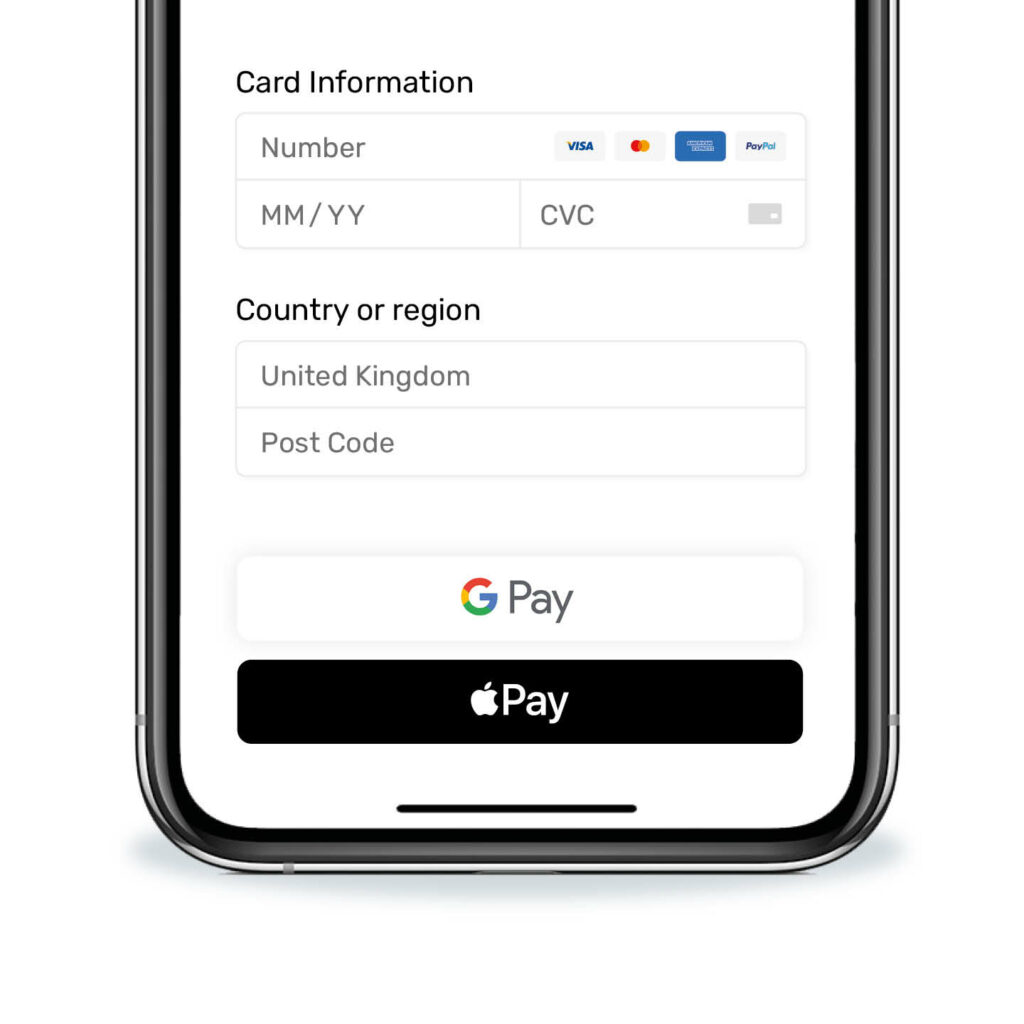
How often do your customers checkout on mobile? Or do online banking via their phone? These are both examples of mobile commerce and, as you can imagine, are becoming more and more widely used.
So, if you haven’t already, you need to get your business optimised for mobile.
To put it simply, mobile commerce (m-commerce) is the buying and selling of goods and services via a smartphone or mobile device. Whereas electronic commerce (e-commerce) is done via any device, but more often than not on a computer.
Both are hugely important for any business and have their own benefits and consumer base. Most businesses are already optimised for e-commerce but are losing sales because they haven’t improved the experience on mobile too.
Mobile commerce covers multiple areas within the digital market so it’s important for most businesses to take it onboard. Here are the main types of m-commerce:
We’ve all had a browse on our phones during our lunch break to pass the time, right? Mobile shopping is the type of m-commerce that allows us to do this, and complete the transaction without having to switch to a computer. It also allows businesses to promote via other digital channels, like social media, SMS and push notifications, opening them up to even more consumers.
Social media is changing the way consumers shop making social commerce one of the fastest-growing types of mobile commerce. They can quickly make a purchase in the middle of scrolling through their favourite platform without even leaving the app. It has really taken the quick and convenient way of shopping the younger generation has come to expect to a whole new level.

With mobile banking, it’s much more convenient to take care of your finances with the option of using any device or even an app to make transfers, pay bills, view your bank balance, etc.
It’s no wonder there’s been a rise in digital-only banks taking advantage of the switch in how consumers like to manage their money.
The way consumers make payments has changed so much over the years; mobile payments have grown rapidly with the amount of alternative payment methods now available. Digital wallets have become increasingly popular making payments online as well as in-store much quicker and easier.
The benefits of m-commerce will continue to grow as it develops, but there are already plenty of reasons why your business should be optimised for it.
Potentially one of the biggest reasons consumers opt for mobile commerce is because it’s convenient. Ever forgotten to buy something and you’ve just returned home from the shop? Or need to quickly send a friend some money? You can literally do whatever you need to do anytime, anywhere with a few quick taps on your phone.
Consumers expect quick, simple and convenient ways to be able to shop and make payments, and that’s what mobile commerce can offer. It’s not ideal having to switch to a different device part way through your shopping experience, and you shouldn’t have to do that anymore with advanced technology. So, if your site is optimised for mobile, then you are instantly offering a smoother customer experience.
Generation Z and millennials have been raised in a digital era and are used to having everything at their fingertips, or at the other end of their phone. Between them, they have so much spending power, so if you aren’t optimising your business to target this huge consumer base, you could be missing out on a lot of sales.
You can gather more data that you wouldn’t necessarily be able to get from just a desktop. For example, thanks to GPS tracking, you can discover the location of your consumers which can help improve the service by offering information like delivery times and their nearest store.
So, are you ready to optimise your website for mobile? Here are our top tips on how to get started.

Many consumers use mobile shopping because they are digital-first and would prefer to use their preferred payment method like digital wallets. So, first things first, make sure you offer multiple options of payment for your customers to choose from.
The screen of a mobile device is much smaller than a computer screen, so altering the design of your website is a no-brainer, right? But how? Well, there are a few obvious ones, including:
Mobile commerce has the highest rate of abandoned carts at 85.65%, so it’s pretty important to improve the checkout experience for mobile devices.
Quick loading speed – How quickly your website loads can determine whether your customer will stick around or not, it may even need to be as quick as one second.
Add a guest checkout option – Letting your customers easily enter their details with a quick checkout form, rather than force them to create an account, is often a good way to get that conversion.
Allow one-click buy – Speed isn’t just about the loading time. Returning customers might not want to have to retype their details every time they make a purchase. Having the function to save their details will make future purchases even quicker.
Improve your security features – One of the biggest reasons a consumer may switch to a desktop to make a transaction is due to concerns about the site’s security. A few ways you can put your customers at ease include highlighting some of the risk management you have in place and displaying customer reviews and logos of well-known, trusted payment methods you accept, like Mastercard.
Want to get started on optimising your website for mobile commerce? Get in touch today and one of our experts will be happy to help.